Contents
- Traditional and Modern Eating Practices
- Vegetarianism and Dietary Restrictions Across Communities
- Meals of the Day
- How Spicy is the Food?
- Local Produce
- Pickles
- Baby Foods and Tiffin Boxes
- Festival and Seasonal Delicacies
- Wedding Food
- Prasad and Bhandar
- Smoking, Drinking and Substance Use
- Culinary Traditions
- Pithla Bhakri
- Kothimbir (coriander) Vadi
- Ukadiche Modak
- Eating Out
- Dorabjee & Sons
- Vaidya Uphar Gruha
- Gujar Colddrink House
- Goodluck Cafe
- George Restaurant
- Vaishali
- New Refreshment House (NRH) Badshahi
- Poona Guest House
- Prabha Vishranti Gruha
- Marz-O-Rin
- The Place-Touché the Sizzler
- JM Road, FC Road, and MG Road
- The NV Gadgil Bridge
- The Amruteshwar Bhuvan
- Local Worker Cooperatives / Self Help Groups
PUNE
Food
Last updated on 7 November 2025. Help us improve the information on this page by clicking on suggest edits or writing to us.
Traditional and Modern Eating Practices
There have been many changes in the food culture of Pune in the recent decades. The traditional Maharashtrian cuisine like chapati-bhaji with dal-rice, and the occasional chicken or mutton dishes on the weekends, was the usual dietary habit of Punekars. However, with the rapid urbanization of the city and establishment of various IT parks, it has resulted in changing dietary habits. Restaurateur and socialite Karen Anand explains, “I have noticed the rise of stand-alone restaurants offering a range of cuisines and people eating out rather than cooking at home, while entertaining as two important trends in the food scene of the city.”
The staple diet of Punekars has shifted from food grains like millets and pulses to cash crops like sugarcane, cotton, and maize. Nowadays, the manner in which people consume milk has also changed. Earlier, people preferred fresh milk directly from gaushalas, but now people are okay with packaged milk and frozen food. Chitale Dairy and Katraj Dairy are the popular packaged milk companies preferred by Punekars.
Further, the development of Pune has also diversified the food palate of the district. Numerous fruits and vegetables that are not native to the district have become popular and are sourced from different regions of the country. Fruits like dragon fruit, tangerine, avocado, lichi, and pear are loved by many Punekars. Similarly, vegetables like broccoli, parsley, lettuce, and tinda have gained immense popularity.
However, in this fast-changing and evolving food culture, the Peths or the central old areas of the city still promise to preserve their heritage and their diets as development occurred in the sector of frozen food.
Vegetarianism and Dietary Restrictions Across Communities
Although it seems like Pune’s food culture is dominated by vegetarianism, in the recent decades this has seen a major shift. The socio-economic development and urbanization of the city and its talukas have resulted in the popularization of non-veg food in the city. Chicken and mutton now seem to occupy an important place in the average Punekar’s diet. However, it is noteworthy that it is the communities such as the Muslims, Marathas, Kayasthas and Saraswats that primarily consume non-veg food. Most Brahmins and Jains have continued to stand by the vegetarian diet.
Meals of the Day
Punekars typically have their breakfast during the morning hours. A typical breakfast begins with the famous Misal-Pav, a traditional Maharashtrian dish that consists of misal, a curry made from moth beans (matki usal), potatoes (batata bhaji), farsan, and poha, served alongside a pair of pav (bread). The curry, or rassa, is served separately and can be added according to personal preference. It is available in three spice levels: light, medium spicy, and extremely spicy. Normally, Puneri misal is complemented with a glass of chilled buttermilk (taak), which balances the spiciness of the misal. Some popular misal spots in Pune include Bedekar Misal, Vaidya Uphar Gruha, Katakirr Misal, and Bhadait Misal.
Lunch is generally served during the midday hours, and a common joke about this time is the phrase, “We are closed from 1 to 3 PM,” as many eatery staff take their lunch breaks during this period. The last meal of the day, dinner, is typically during the evening hours.
In addition to these three main meals, people usually enjoy a tea or coffee break between lunch and dinner. Evening beverages are often accompanied by snacks known as namkeen. One of the most famous snacks that any Punekar will mention is Chitale Bandhu’s Bakarwadi. This snack is a favorite among locals and is frequently recommended to non-locals and tourists. The recipe has been kept secret and passed down through generations by Chitale Bandhu since 1950. Although primarily a Gujarati snack, it is beloved by Maharashtrians; today, Chitale sells approximately 6,000 kg of Bakarwadi daily. Other popular snacks in the district include Dhokla, Papadi, and various types of Shev and Chiwda, prepared by companies like Haldiram, Chitale, as well as cooperatives and individual shops.
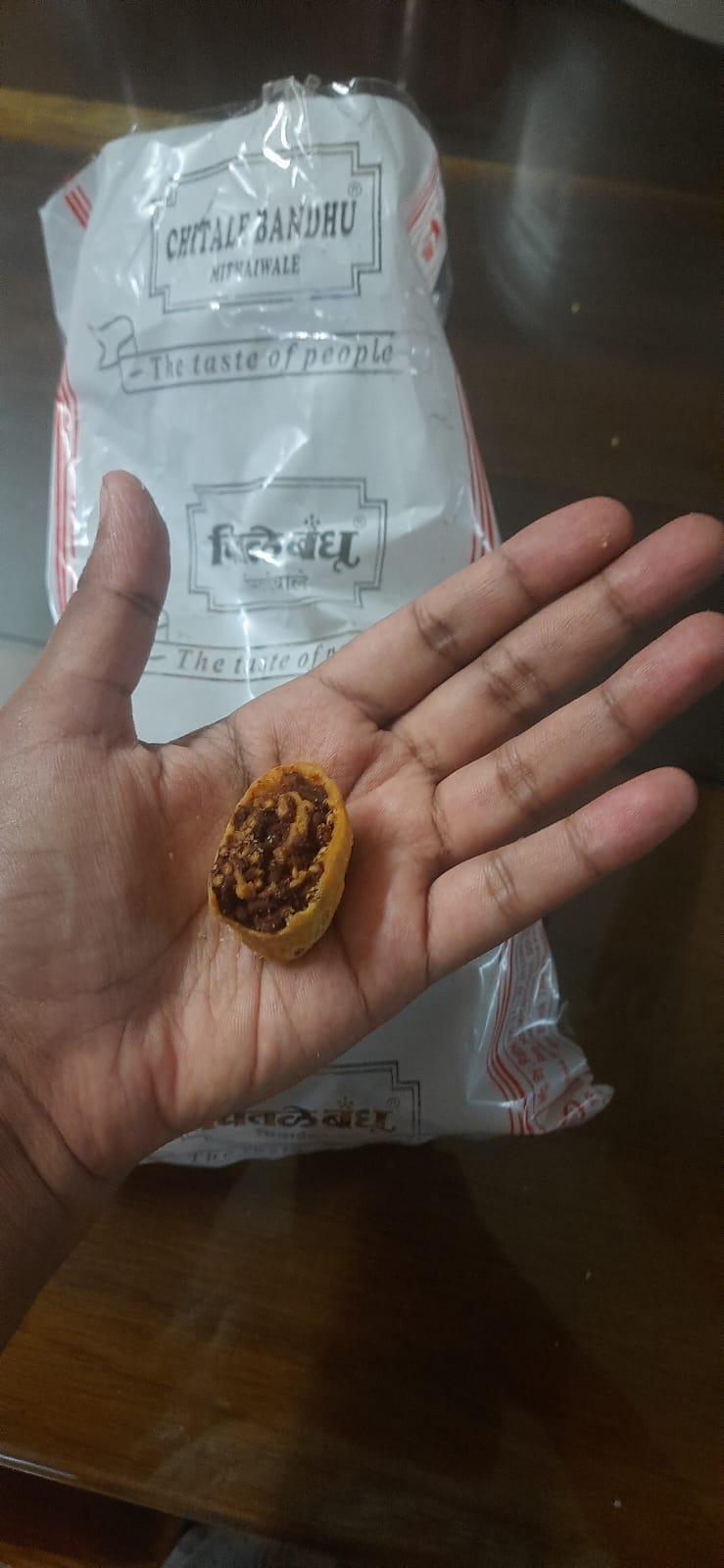
An interesting cultural practice in Pune is the consumption of post-meal digestives. There is also a trend of consuming digestives after meals. The most common digestive is badishep or badi saunf (fennel seeds). It is commonly kept in households and at the billing counters of restaurants. Some other digestives liked by people include supari (readymade/ homemade), homemade paan and amla candy.
How Spicy is the Food?
The spice levels are mostly mild across the district, except for chicken/mutton dishes found in talukas like Indapur, Daund, Saswad, Baramati, and Shirur. The mutton prepared in these talukas is referred to as ‘kala (black) mutton’ which is spicy, has a distinctive brown-black colour, and is relished with the traditional jowar/bajra bhakri. Hotel Jagdamba situated in Khed-Shivapur on the Pune-Bangalore Highway is famous for ‘kala mutton’ and bhakri with tupvaati (bowl of special melted ghee) which is applied on the bhakri to give the customer a softer aftertaste. Otherwise, Pune is known for having a sweet palate.
Local Produce
The major food grains grown in Pune are onion, wheat, paddy, jowar, bajra, and pulses like moong and tur. The staple grains are wheat, rice, and jowar. Jowar is preferred for bhakri but in the winters bajra is used due to its ability to provide much-needed warmth to the body.
Pickles
Punekars love their homemade pickles. The mainstream varieties are sweet-spicy mango and lemon pickle. Some of India’s premier companies famous for pickles such as Mother’s Recipe, Grandma’s and Nilon’s were founded in Pune.
Baby Foods and Tiffin Boxes
In Pune, infants and toddlers are mostly fed vegetable soup of carrots, spinach and green leafy vegetables, rice porridge, boiled pulses soup and cooked daal soup. For school going children, parents pack a variety of food items like Pohe, Idli Chutney, ghee-sugar-chapati, sandwiches, Upma, Dosa, Ghavan, bread, etc.
Festival and Seasonal Delicacies
Like most other districts, the food palate of Pune also changes with the seasons. For example, in summers, Aamras (mango pulp) dominates over all other items. The fresh harvest of Alphonso mangoes comes into the mainstream wholesale markets of Pune and finds its way into households by early April. Mangoes are sliced, pulped, and mixed to prepare Aamras with the addition of elaichi (cardamom) for garnishing. When it comes to grains, wheat is used throughout the year, Bajra is preferred in winters and jowar is mostly consumed in summers.
Additionally, certain delicacies are specially prepared for specific festivals. For instance, Modak is a dish prepared usually only during Ganeshotsav and on Chaturthi. Puranpoli, made with jaggery and split dal between layers of wheat roti, is prepared specially for Holi, while Gulpoli (made from jaggery) is made on Makar Sankranti. Sabudana Khichdi and Sabudana Wada (both made from tapioca pearl/sago) with sweet potato and varai (barnyard millet) rice with Bhagar (gluten-free grain curry) is made to observe the fast on Ashadi Ekadashi.
Diwali is an occasion for making Chakli, sweet Karanji, different types of Sev, Besan and Rava Ladoos, Shankarpali, and Poha Chivda. This combination of sweet and namkeen snacks is called ‘Diwali Faral’ which is served to every guest during Diwali. The popular practice of exchanging faral prepared within households with friends, extended family, and neighbors is a part of the tradition and popular Diwali culture. The recipes for different sweets and snacks in faral are passed down from generation to generation, which makes Diwali an occasion to collectively remember their grandmothers.
Wedding Food
The food at weddings in Pune is either dominated by Punjabi cuisine or Marathi cuisine. One can find varieties of paneer bhajis and mix-veg bhaji with Rumali Roti and Naan on the wedding menu. Additionally, different types of salads, starters like Chinese soups, and chaat and South Indian dishes like Dosa and Appam, are also served.
Alternatively, wedding menus might include Marathi dishes like Aluchi Bhaji (colocasia leaves bhaji), Masale Bhat, Potato Bhaji, Brinjal Bhaji, Aluchi Vadi (a crispy/soft pan-fried snack made from Colocasia leaves), Chapati, Phulka, plain rice, Daal, Papad, pickle, Kurdai, salad, Jalebi, Gulab Jamun, buttermilk and paan.
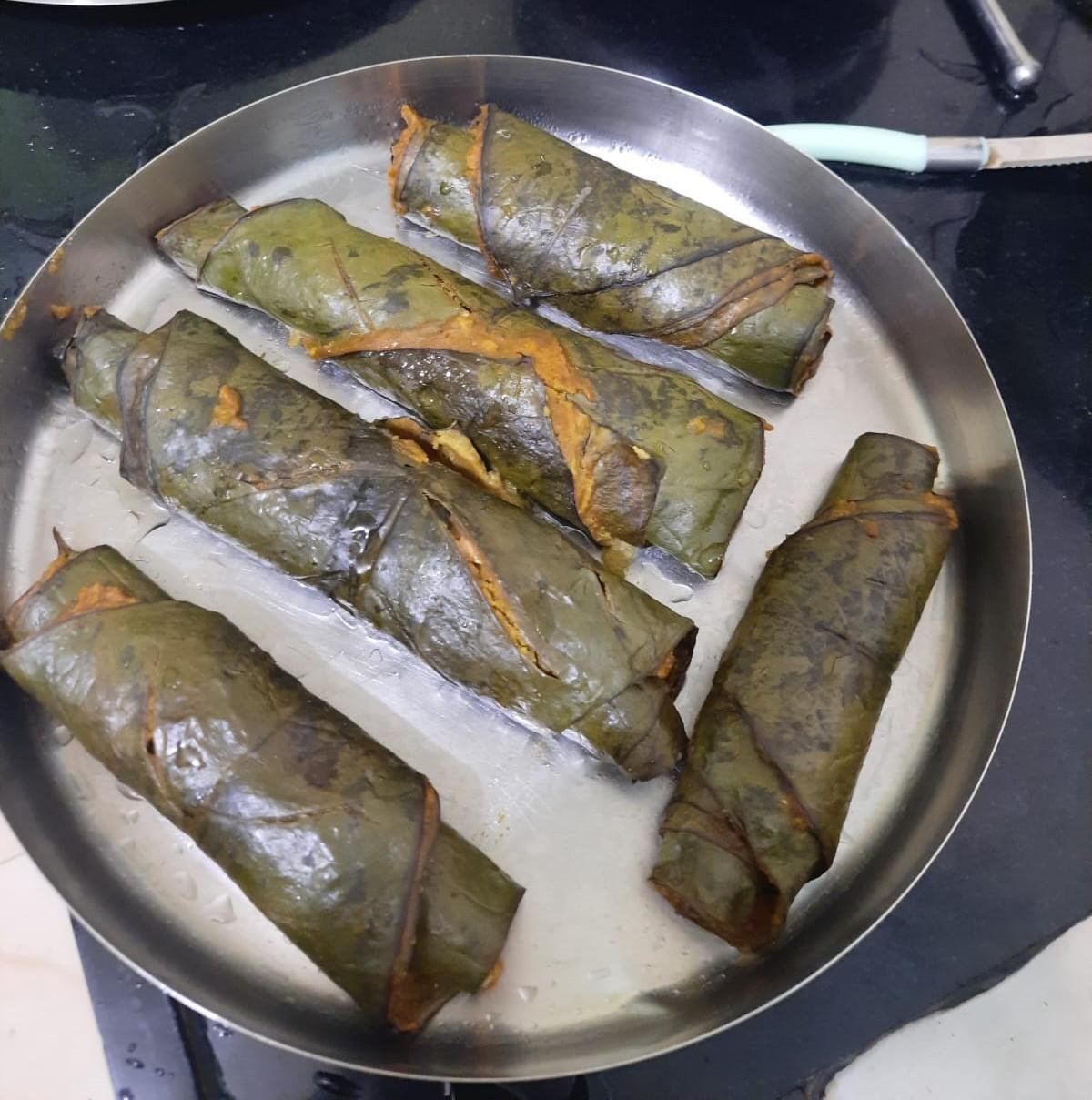
Prasad and Bhandar
Motichoor Ladoo, Sheera, Khichdi (sabudana), coconut, and roasted chana along with Mimosa sugar balls (Prasad Dana or Nakul Dana) are the items offered as prasad in various religious sites of the district. However, for Bhandara kept on festive occasions like Datta Jayanti, items like Puri, Bhaji (brinjal, potato, etc.), and Daal Rice are served.
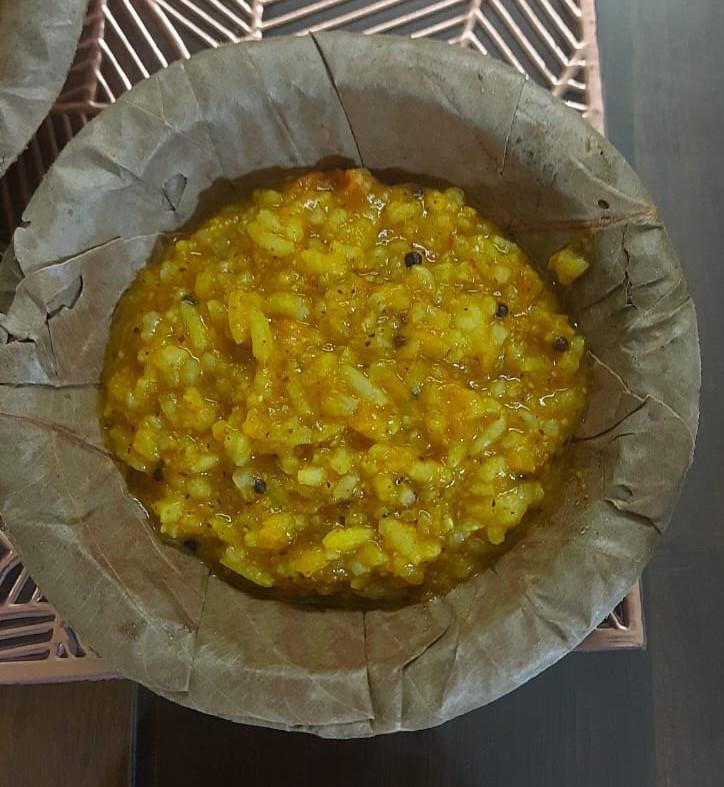
Smoking, Drinking and Substance Use
The alcohol consumption in the district is moderate among both men and women. The younger generation mostly prefer drinking beer while the elders prefer whiskey and rum. The beer culture in the district has lately been on the rise as for the 2023 tax period, Pune was the only district to record a rise in beer sales in Maharashtra.
Interestingly, there is a stark gender difference when it comes to the drinking culture in Pune. NFHS-5 data indicates a low prevalence of women aged 15 and above consuming alcohol at 0.2% and a corresponding figure of 11.6% for men. However, upon inquiry, people answered that alcohol consumption has increased across all genders as compared to the past. As per the Pune branch of the state excise department, liquor sales in Pune surged by a staggering amount, which includes the increase in country-made liquor by 22%, Indian made foreign liquor (IMFL) by 28%, beer by 66% and wine by 43%.
It is noteworthy that unlike many other districts, there is no unique variety of alcohol native to the Pune district. The trend of tobacco consumption is unique. According to NFHS-5, women aged 15 and above found to use any kind of tobacco was 11.7% and the corresponding figure for men was 27.9%. The tobacco consumption for women is mostly smokeless and they mainly chew Mishri. In urban areas of the district, people working in the corporate sector, and low-income groups, smoke very often. Earlier, women were not seen smoking, but today this scenario has changed. Today, women also smoke but comparatively less than men.
Culinary Traditions
The authentic food experience in Pune is through its homemade Maharashtrian dishes. Some of the common ones are Sabudana Vada, Pithla Bhakri with Thecha, Thalipeeth with mango pickle (loncha), Kothimbir (coriander) Vadi, Puranpoli, Ukadiche Modak, and Bhakarwadi, among others.
Pithla Bhakri
A staple food of Maharashtrians, Pithla Bhakri is a local dish of Pune as well. Also known as ‘farmers’ food’, Pithla is a thick gravy made from gram flour (besan), onion, green chilies, and garlic and it is served with bhakri. Bhakri is made from jowar or bajra. The dish is served with spicy garlic-chili red chutney and is known as ‘Thecha’. The most famous spot to get this is Sinhagad Fort, 30 km from Pune city. It is served with ‘sweet dahi’ or yogurt.
![Pithla Bhakri[1]](/media/culture/images/maharashtra/pune/food/pithla-bhakri1-1dbb23bb.jpg)
Kothimbir (coriander) Vadi
Kothimbir Vadi is another delicacy that Punekars savor on special occasions like festivals and weekend lunches. Vadi means cubes, so Kothimbir Vadi means cubes of coriander leaves. They are made into a thick batter with gram flour (besan), spices, and sesame seeds. This is then steamed or deep fried cut into small wedges or cubes and served with green chutney or pickle.
![Kothimbir Vadi[2]](/media/culture/images/maharashtra/pune/food/kothimbir-vadi2-c5ab88d3.jpg)
Ukadiche Modak
Ukadiche Modak is Pune's most recognizable sweet dish. It is generally prepared during the festive season of Ganesh Chaturthi in September. The festival is incomplete in Pune households without relishing the modaks. They are made using a filling of grated coconut and jaggery (gul). This mixture is then stuffed into balls of rice dough given a specific triangular shape and then steamed. They are cherished by adding a spoonful of ghee to impart flavor.
![Ukadiche Modak[3]](/media/culture/images/maharashtra/pune/food/ukadiche-modak3-1af4a581.jpg)
Eating Out
The culture of eating outside has become very popular in Pune. The city has innumerable street food stalls that are open throughout the night, multiple fancy restaurants and various hangout spots for people across different strata of the society. Being part of the Bombay Presidency and housing a military cantonment, the district has a cosmopolitan food heritage. Some of the legacy restaurants are as follows:
Dorabjee & Sons
Still retaining its old-world look, this restaurant gives us an insight into the colonial past of the city. The restaurant was started by Sorabjee Dorabjee in 1878, and it welcomed both British and Indians. It started as a tea stall that sold Irani chai and bun maska (butter) and evolved into a full-fledged restaurant due to Sorabjee Dorabjee’s efforts. It set a benchmark example for Indians to eat and popularize Parsi cuisine like Irani Chai and Bun Maska in Pune. Even today, one will find multiple Irani cafes all across the city.
Vaidya Uphar Gruha
This old-style eatery in Budhwar Peth in the old city area of Pune, started in 1912. It is famous for its green and sweet misal pav which is different from the usual red and spicy misal. Its specialties include prasad Shira and Kairichi (raw mango) Daal. The eatery has preserved its vintage look with no changes to the architecture since its inception. The Joshi family has been running it with Deepak Joshi being the 4th generation owner. The eatery has regular customers like senior citizens and locals whose families share a personal connection with the green misal.
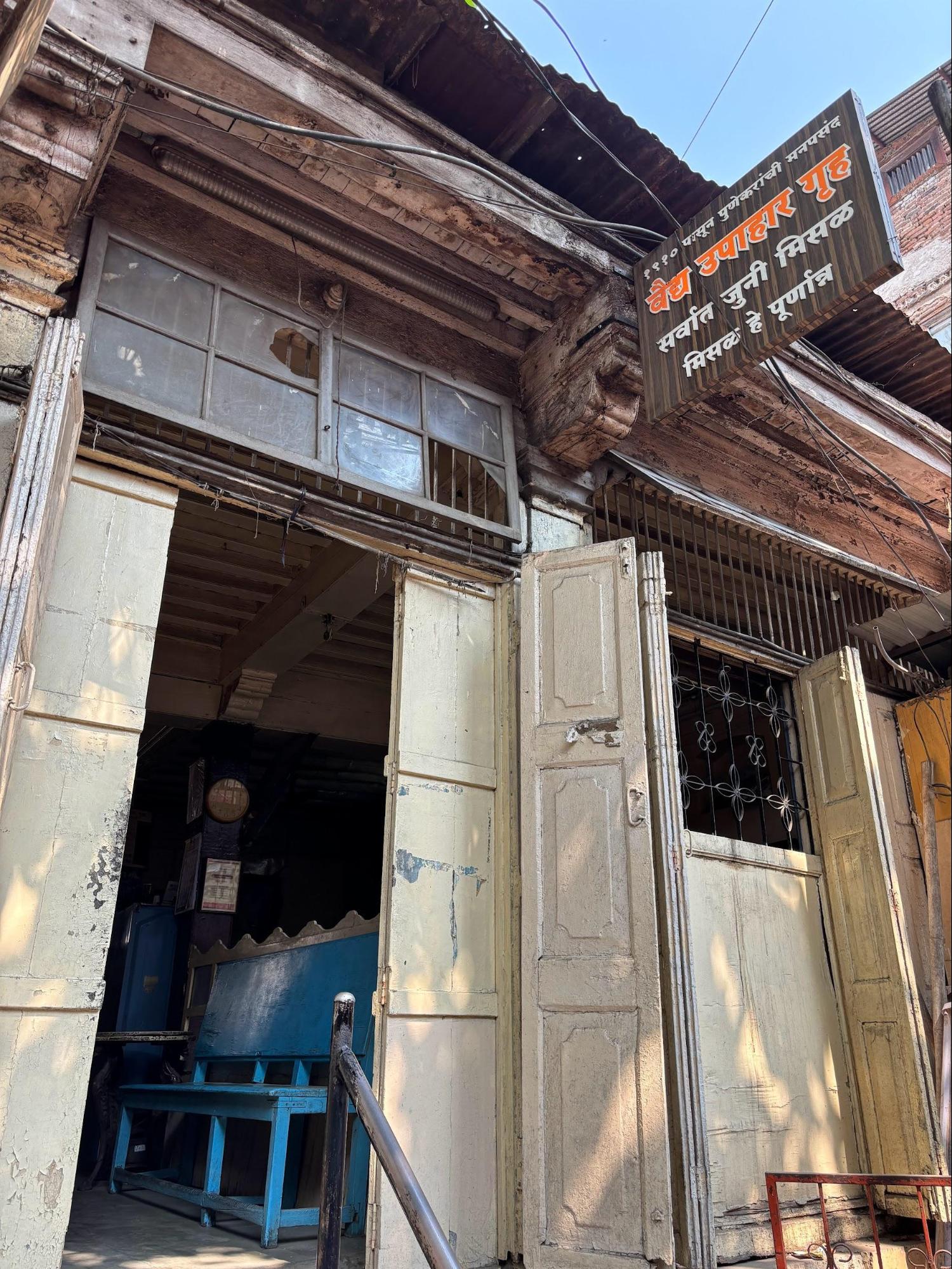
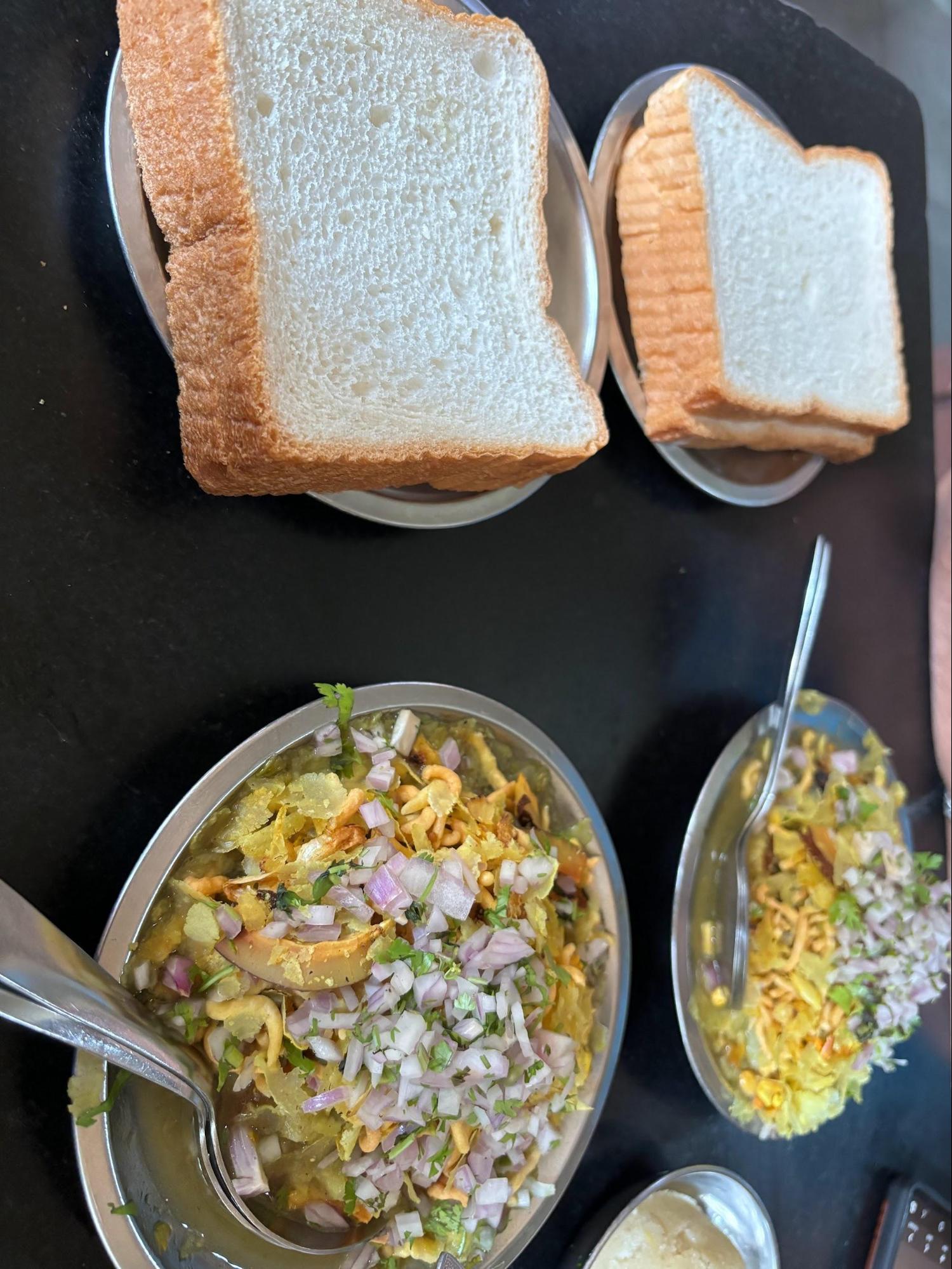
Gujar Colddrink House
Gujar was started by Baburao Malhari Gujar in 1923 as a cold drink house selling sodas and sharbat. They later started putting an ice cream scoop into the cold drink and thus was born the delicacy ‘Mastani’. The name derives its inspiration from a famous saying in Pune when people say ‘Mast ahe’ (it is awesome) after having Mastani. This saying morphed into Mastani. It is currently run by Vishwanath Gogavale, the 3rd generation of the Gujar family. The place celebrated its centenary in 2023 and continues to give its customers the ultimate ‘Mastani’ experience.
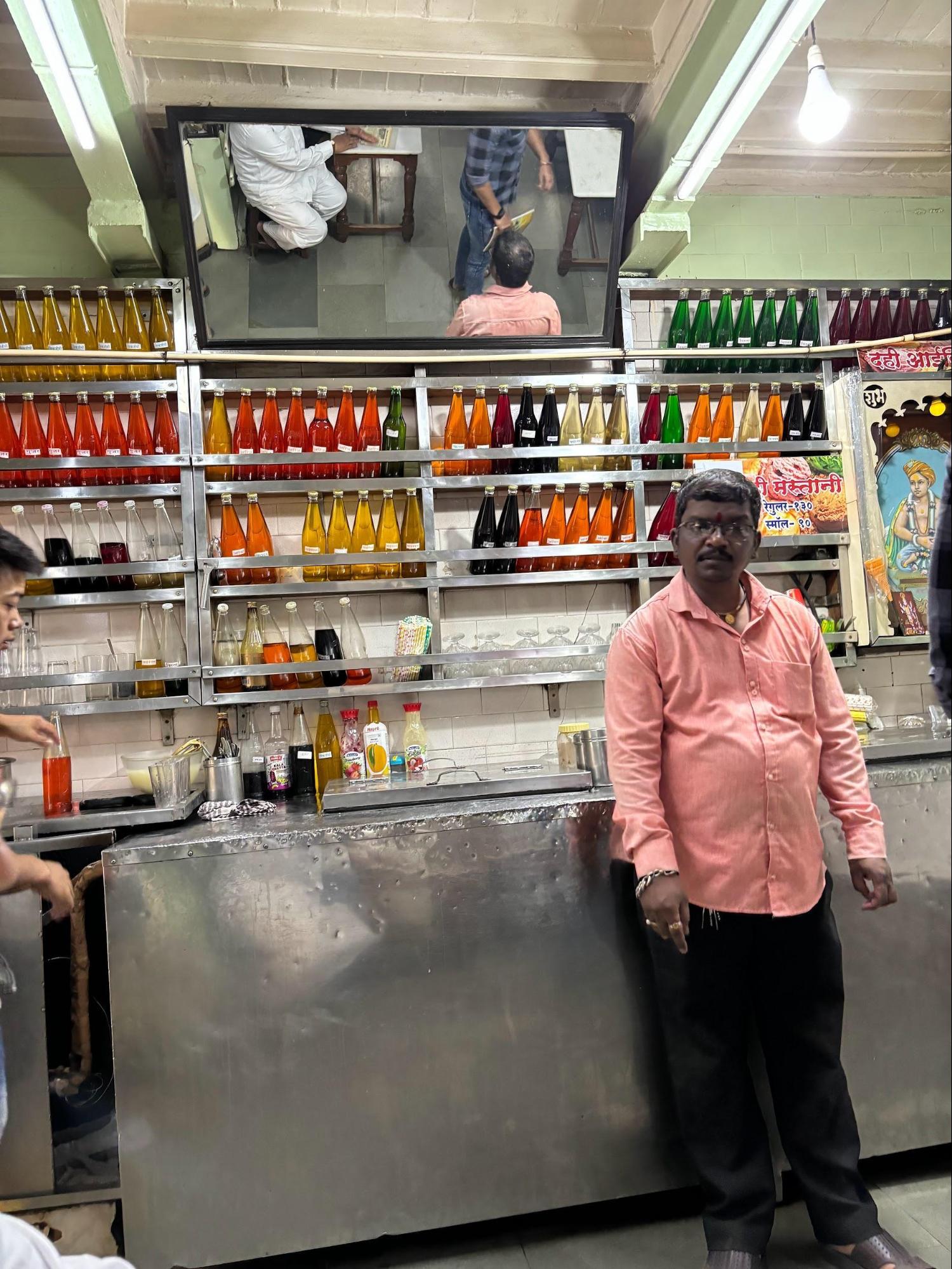
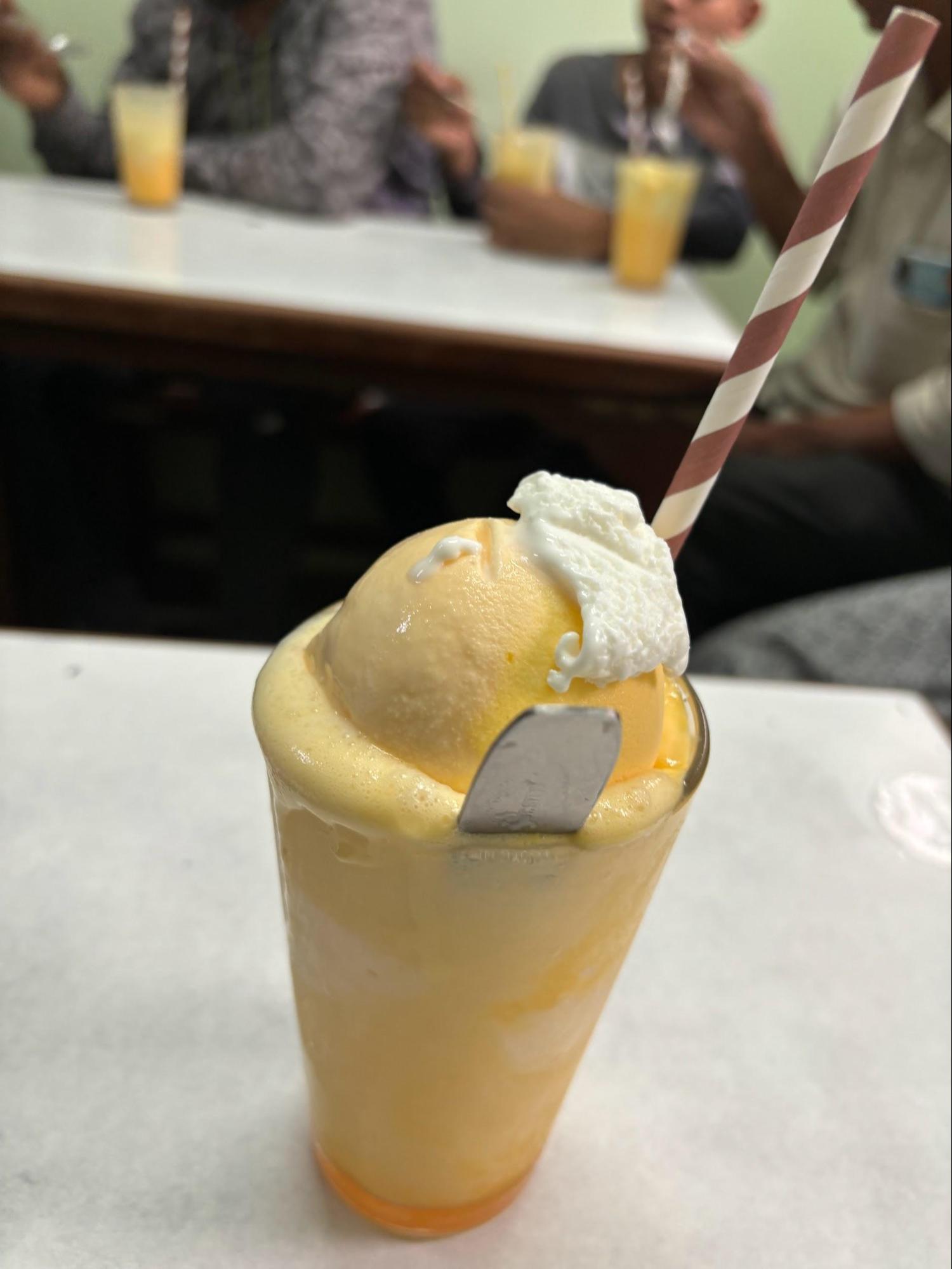
Goodluck Cafe
This famous Irani cafe started in 1935 by Haji Hussain Ali Yakshi. It lies at the intersection of two of Pune’s busiest roads, namely Bhandarkar Road and Fergusson College (FC) Road. Like Dorabjee in the Camp area, Goodluck retains its old-world charm by offering traditional Parsi delicacies like Bun Maska and Irani chai. This cafe is known for various other food items like Mutton Keema, Bheja Fry (masala) with Pav (bun), Caramel Pudding and Chocolate Mousse. The cafe is in the vicinity of some of Pune’s most famous colleges like the Film and Television Institute of India (FTII), Fergusson College (FC), Symbiosis, and Gokhale Institute of Politics and Economics.


George Restaurant
Another notable addition to a string of Parsi restaurants in Pune is George Restaurant in the Camp area of Pune. Established in 1817, Pune Cantt is one of the oldest such cantonments in the country. Being a military installation, it housed sensitive British camps and subsidiary organizations like convent schools, churches, and Parsi restaurants. The Parsis maintained close contact with the British and the restaurant business was one of the most explicit ways of doing so. Started by Hassan Jafari in 1936, George is one of the most visited outlets for Mutton Biryani. Traditional Persian dishes like Chello and Jujeh kebabs and Caramel Custard in dessert are also recommended to the visitors. It is now run by Reza Aryaei, a third-generation owner.
Vaishali
Any tourist upon landing in Pune is first taken to Vaishali, no matter where they come from. Started by Jagannath B. Shetty in 1954, Madras Health Home (now Vaishali) is still one of the most famous South Indian restaurants in the city. Shetty initially opened Cafe Madras (Roopali) in 1951 and then Vaishali came into being. The trinity of Vaishali, Roopali, and Amrapali on the city’s busy Fergusson College Road has a special place in the heart of Punekars. As for the delicacies, Mysore Masala Dosa with the iconic white coconut chutney with traditional sambar is the mainstay of the Vaishali menu. The Dahi Vada is relished around the year, especially during Pune summers.
There is a popular running joke in the city that every Punekar who does an early workout in the morning by running or walking around the Fergusson College (FC) Road, completes it by having Masala Dosa and Coffee at Vaishali.
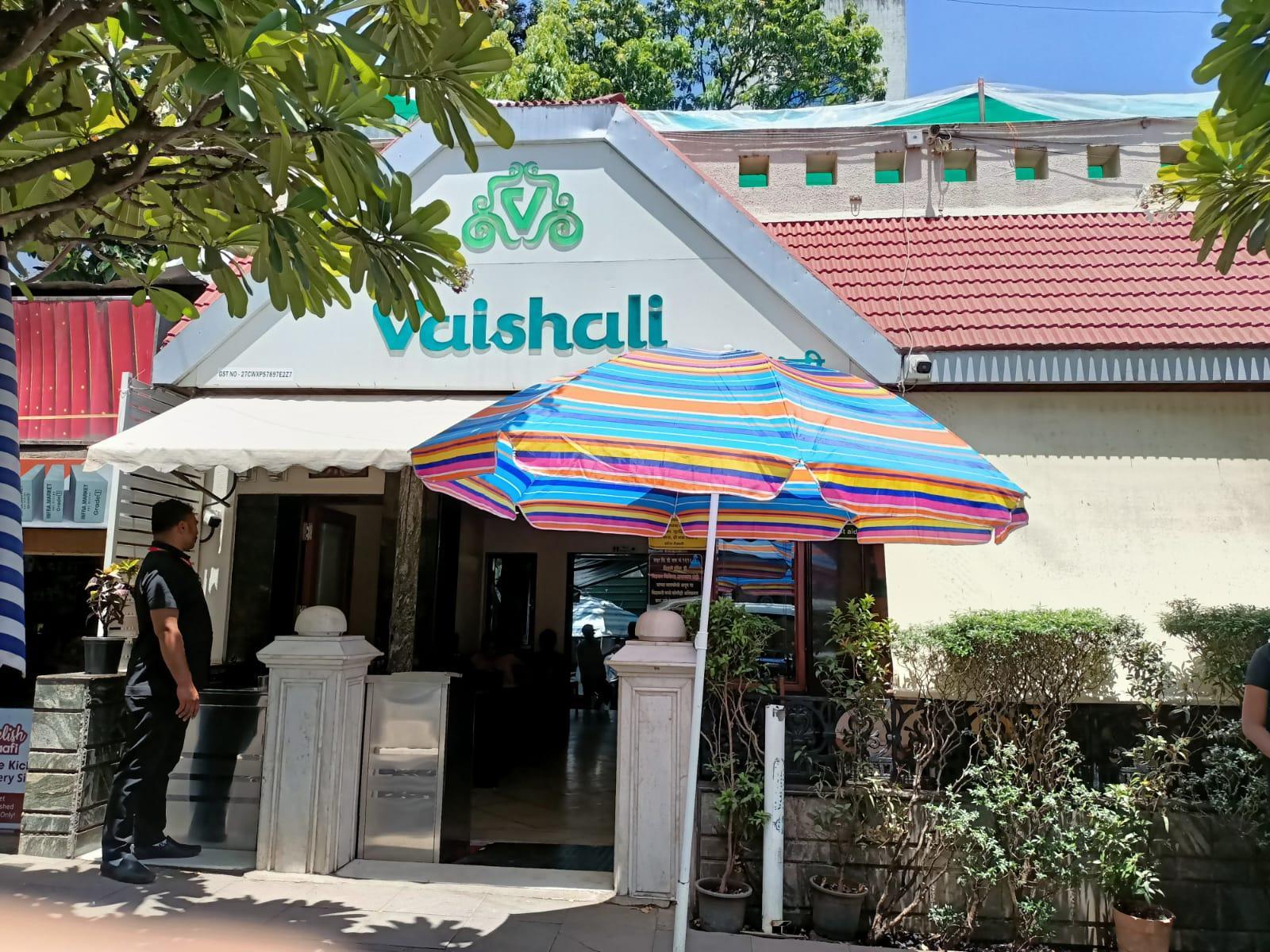
New Refreshment House (NRH) Badshahi
Located on the busy Tilak Road in Sadashiv Peth, the vintage restaurant is popular among locals and boasts of generational customers. It was established in 1936 by the late Sadashiv Moghe. In 1962, the management was taken over by Dattatray Sahasrabudhe, fondly known as “Mama Sahasrabuddhe”. Initially it served a curated menu of breakfast items like tea, Batata Vada, Matar (green peas) Usal, and other delicacies.
In the 1970s, late. Ramesh Sahasrabuddhe took over from his father Mama Sahasrabuddhe and initiated a major expansion of items on the menu which included fasting options like Ghavan, Matar Patties, Idli Sambar, and other Konkani dishes. The dishes retain a Konkani touch to date. Following the family tradition, the late. Vinayak Sahasrabuddhe, son of Ramesh, took over the reins. Under his guidance, Badshahi incorporated Punjabi dishes, Pav Bhaji, and some southern delicacies into the menu. Currently, the establishment is run by the wife of Vinayak, Mrs. Medha Sahasrabuddhe.
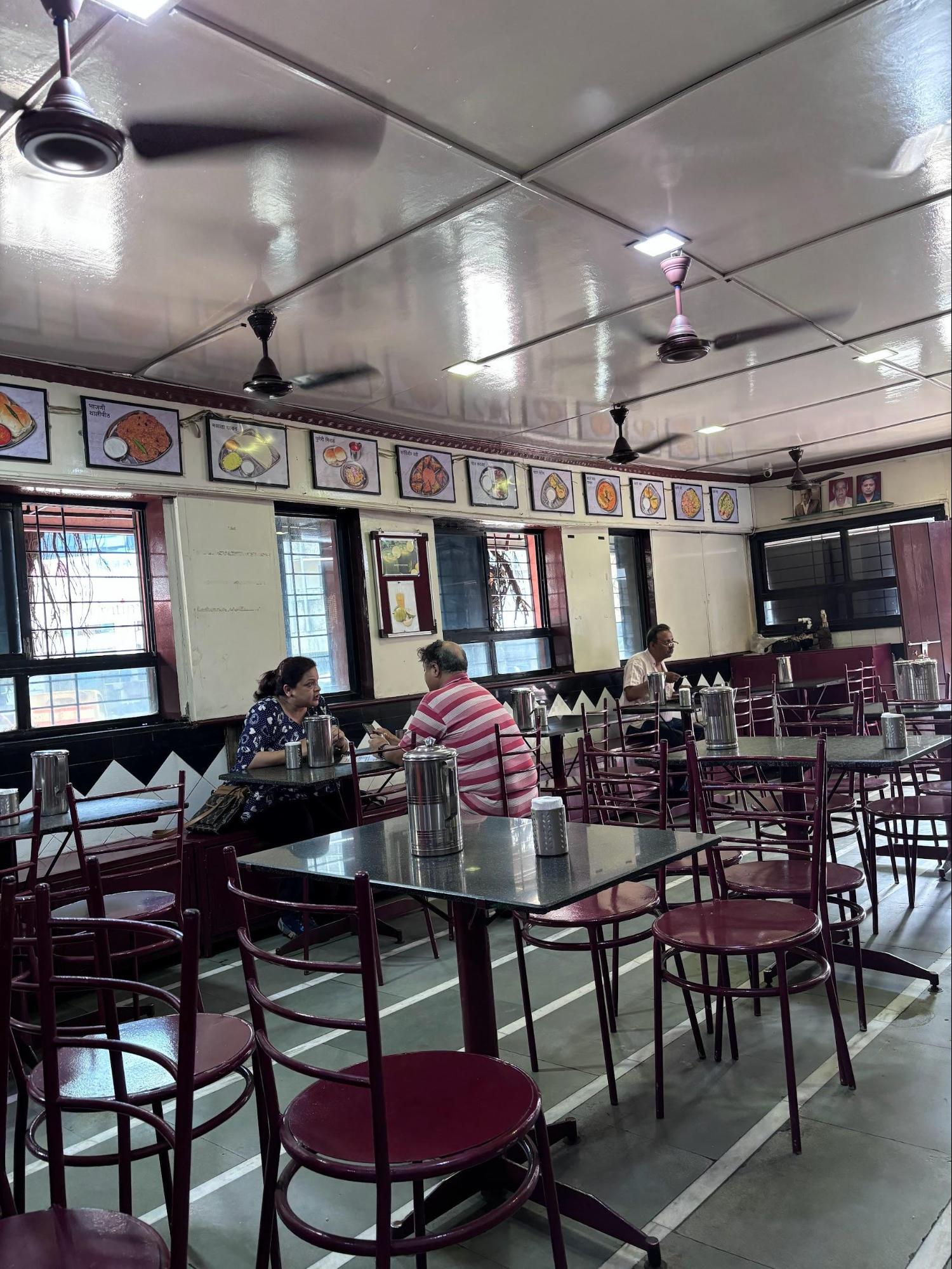
Poona Guest House
Located in Budhwar Peth, this heritage dining space was established in 1935. They serve authentic vegetarian Puneri dishes, both as thalis and combos. The cost of their famous thali meals ranges from ₹180 to ₹270 and comprises of salad, papad, dry bhaji, Potato Bhaji, curry, Alu chi Bhaji (colocasia leaves sabzi), Masale Bhat (rice cooked in a typical Puneri style), chapati and a dessert.
![Menu of the Poona Guest House[4]](/media/culture/images/maharashtra/pune/food/menu-of-the-poona-guest-house4-f0278d4a.png)
Prabha Vishranti Gruha
It was founded in 1940 in Shaniwar Peth and is famous for its Batata Vada and Sabundana Vada. The taste of the food served here has remained unchanged, according to the old customers who have been visiting it since their childhood. Fourth generations of many families still religiously eat at this place.

Marz-O-Rin
Founded in 1965 by Mr. Sheriar J. Sheriyarji, Marz-O-Rin is most popular among food-lovers of the city. The cafe is housed in a heritage building and is located at the prime location of MG Road. Their Chutney Sandwich and Chicken Sandwich are the most savoured dishes from the menu.
![Chutney Sandwich at Marz-O-Rin[5]](/media/culture/images/maharashtra/pune/food/chutney-sandwich-at-marz-o-rin5-ea418e17.jpg)
The Place-Touché the Sizzler
In 1971, Shahrookh Erani came to Pune and set up this restaurant that serves a variety of sizzlers. The family of the owner is said to have introduced the concept of sizzlers to India by establishing a restaurant in Bombay in 1963. Here, the popular choices of sizzlers are Chicken Shashlik, Steak and Chicken Cafreal. Chicken Escalope and Fish Balchao are also quite popular.
![Sizzler[6]](/media/culture/images/maharashtra/pune/food/sizzler6-459a6783.png)
Apart from these legacy restaurants, the city also has some famous must-try street food dishes. Street food is commonly found in various Indian cuisines like South Indian Dosa, Uttapam, and Appam, as well as Chinese dishes like Schezwan noodles, Fried Rice, Manchurian, and recently popularized momos with types like steamed or fried and pizzas and burgers. The most common street food is the ‘Kutchi Dabeli’ and ‘Shev Pav’. The former is a Gujarati-origin dish that involves mixing boiled potatoes and a special dabeli mix inside the pav (bun). Different sweet and spicy chutneys of tamarind, garlic, date, and red chilies are used for garnishing with roasted peanuts and pomegranates. They are added according to the consumer's preference. The ‘Shev Pav’ is a modification of the burger that involves a larger burger bun stuffed with spicy sev, green chutney, tomato ketchup, chopped onion, mayonnaise, and grated cheese.
When in Pune, one must try the classic street food item - Vada Pav - from the JJ Garden Vada Pav Centre. As the name suggests, it is known for its Vada Pav. The unique thing about this place is the size of its Vada Pav. Twice the size of a normal Vada Pav, it is served with sweet coriander chutney applied inside the pav and served with churra (crisp batter shavings), pickled chilies, and chopped raw onions. Even the Japanese Ambassador to India, Hiroshi Suzuki could not resist visiting JJ Garden for its vada-pav. Other places of interest are Joshi Wadewale and Annapurna Snacks Centre.
![Vada Pav[7]](/media/culture/images/maharashtra/pune/food/vada-pav-ba0f6c73.png)
Apart from the legacy restaurants, there are multiple adda places for the young population of the city to hang out.
JM Road, FC Road, and MG Road
Located close to each other, these are the mainstays of Pune’s street shopping and eating out. They are crowded on weekends due to small shops and businesses plying their trade in sunglasses, earrings, handbags, purses, mobile covers, trendy t-shirts, and related items.
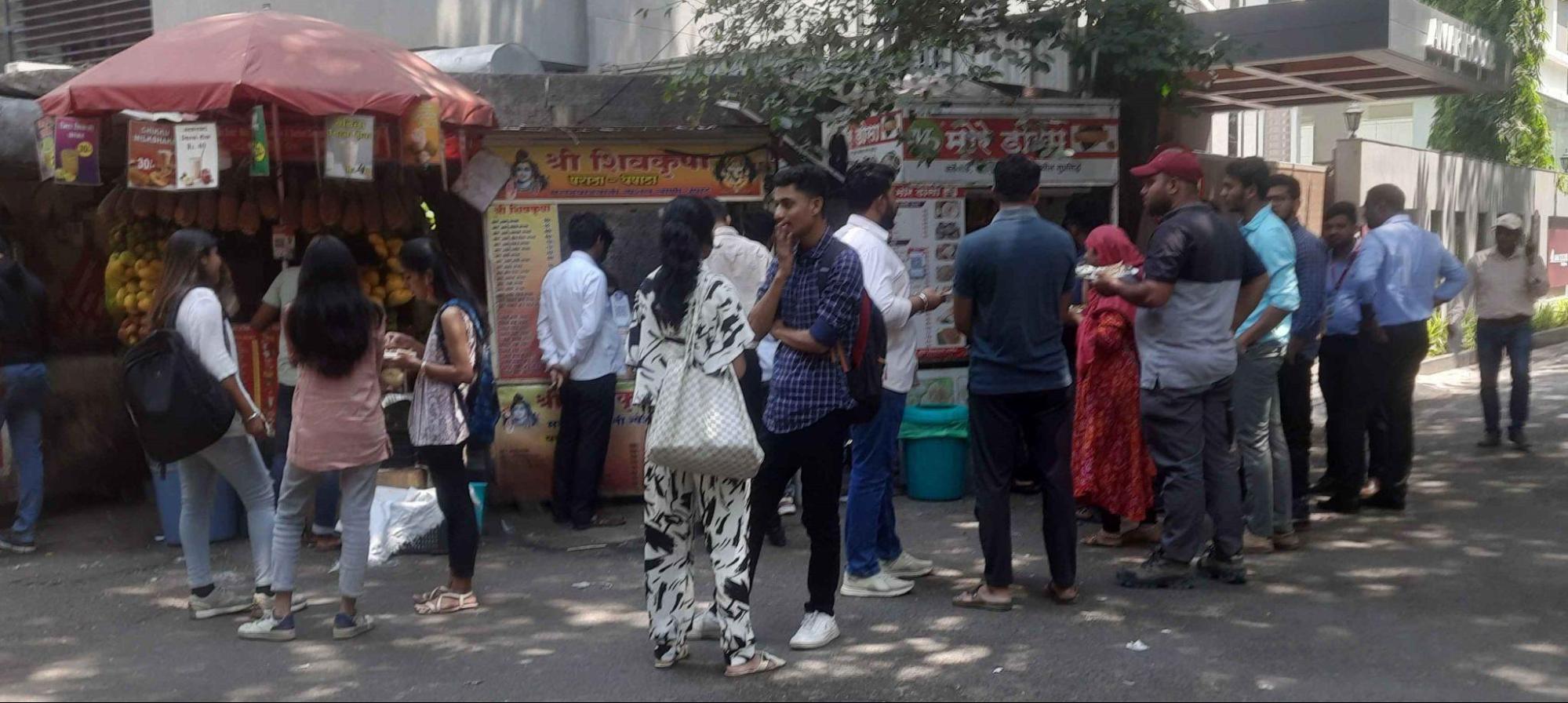
The NV Gadgil Bridge
Popularly called the ‘Z Bridge’ due to its Z-shaped structure, it is a popular adda place for eating street food. One can choose from various food items like momos, Lebanese shawarma, parathas, biryani, chaat, fruit juices, and the famous ‘Vrindavan kulfi’. The famous Vrindavan Kulfi at Z Bridge is famous for its weighing scale to weigh the kulfi slices and dried banana. The owner Kantiprasad Sharma says his business has been running successfully for 70 years.

The Amruteshwar Bhuvan
This Bhavan near Nal Stop on Karve Road is one of the most popular adda places in the district. Over the years, it has evolved into a place to enjoy Pune nightlife. Friends and commoners who venture out for bike rides tend to gather around from midnight and continue to gather at the popular eatery till 3-4 am. It is famous for Poha with chutney, Idli Sambar, Sabudana Khichdi, Upma, and Samosa.
Local Worker Cooperatives / Self Help Groups
There exist many food self-help groups (SHGs) in the district that make and sell items like papads, pickles, faral items (dishes prepared especially during Diwali) and also take catering orders for festivals. Among many records to its name, Pune has the maximum number of self-help groups in Maharashtra. The Pune Zilla Parishad (ZP) has been instrumental in efforts to motivate women to come together and establish businesses collectively through liberal disbursal of loans. The total amount of loans disbursed was the highest in 2022. The Pune Municipal Corporation (PMC) has initiated the ‘Punyashree Market’ to allow women SHGs to associate and build partnerships under a single roof. Some of the prominent food SHGs are Shree Sharda Mahila Gruha Udyog and Tej Tejaswini SHG.
Last updated on 7 November 2025. Help us improve the information on this page by clicking on suggest edits or writing to us.